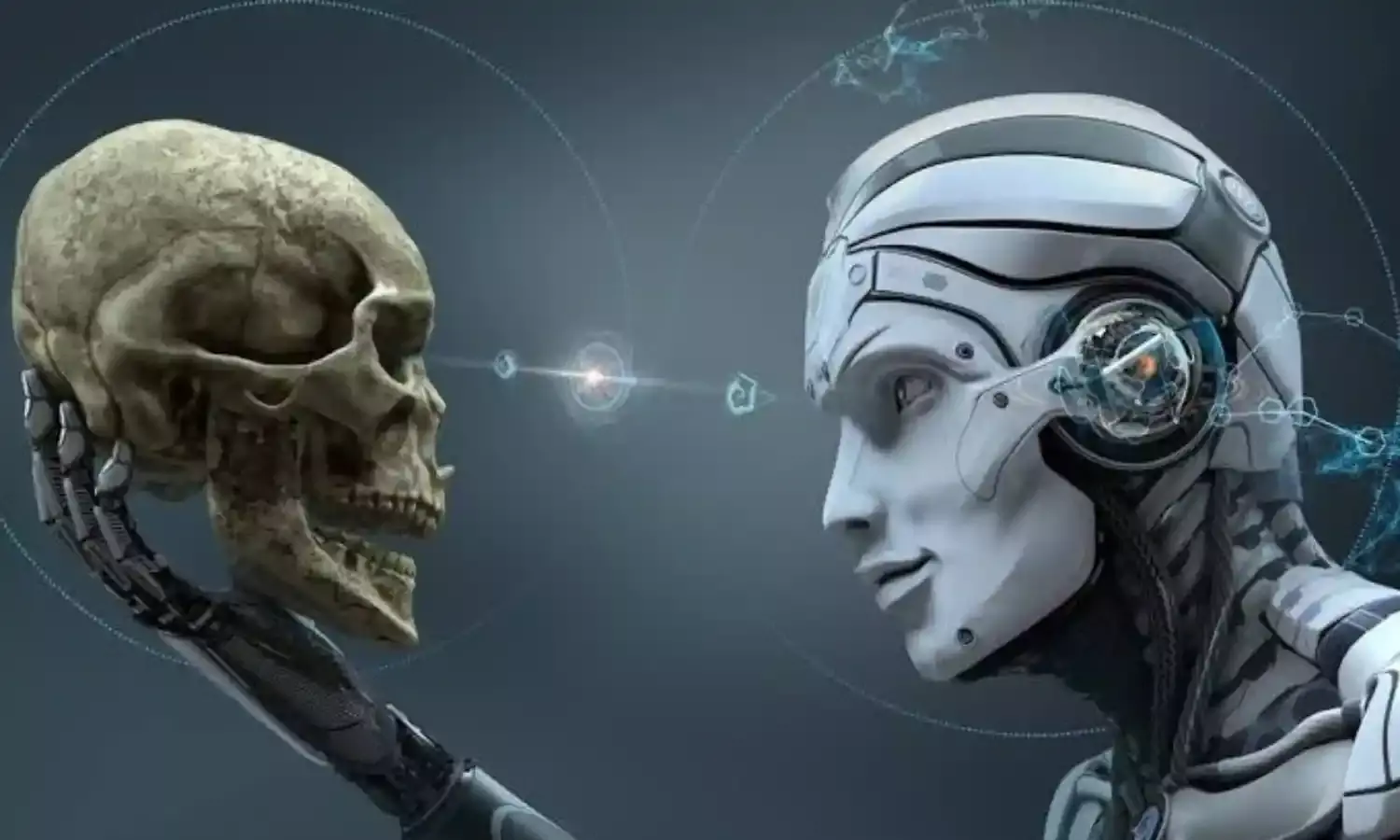Close Encounters Of The AI Kind
Artificial Intelligence can be a disruptive technology;

A red hot tech-potato is sizzling all around us in the garb of Artificial Intelligence (AI). Open AI’s Chat GPT4 created a frisson of excitement, and the debate on it being friend or foe has hotted up.
Globally, the tech-world with its denizens of nerds and policy makers is polarised in two distinct opposing camps. There are those who sing hosannas to AI technology for enabling outputs at almost nano-speed, as compared to the lumbering diligence of humans without machine help.
And, the nay-sayers predict a dire scenario of annihilation of the human species by sentient rogue robots, fed on a diet of advanced generative intelligence (AGI).
The alarm bells of a robotic takeover have been ringing in the movies for a long time. Karel Čapek’s play ‘R.U.R’ (1920) was a protest against technology moving at breakneck speed. It gave us the word ‘robot’ from the Czech word ‘robota’ meaning serf or a labourer.
More familiar is Mary Shelley’s novel ‘Frankenstein’ (1818). Scientist Victor Frankenstein ends up making a sapient creature whose request to make a wife for him is nixed in the fear that they would replicate monsters and destroy humans.
Hollywood has a clutch of popular sci-fi movies that present scary scenarios of AI which seem to be inching forward from fiction to a surreal reality. The classic Kubrick film, ‘2001: A Space Odyssey’ based on Arthur C. Clarke’s ‘Space Odyssey’ series has HAL 9000 (Heuristically Programmed Algorithmic Computer). It controls the systems of the spacecraft, and is a general intelligence bot which turns malevolent later.
‘Star Trek: The Motion Picture’ (1979) has Admiral Kirk taking on a powerful and mysterious cloud-energy to save our planet. For those enamoured of trivia, it also had Persis Khambatta , an actress and ex Miss India, in the role of Lieutenant Ilia, the navigator.
Then there is the well-known ‘Terminator’ series with a cyborg assassin. Not to forget our sci-fi films like the Tamil, ‘Enthiran’ and the Shahrukh Khan starrer, ‘Ra.One’ (2011), that has a game developer losing his life to the rogue robot Ra.One (perhaps a reference to Ravan ).
But the real humdinger is ‘The Matrix’ (1999) where we humans are living in a computer simulation, controlled by the machines we created.
And when the ‘Godfather of AI’, Dr. Geoffrey Hinton left Google a year ago, warning of dangers of promoting generative AI products without ethics and safeguards, it was time to sit up and ponder a little. In 2018 Hinton and his two collaborators were given the Turing Award, considered the Nobel Prize of computing, for their work on ‘neural networks’ which began in 2012 at the University of Toronto.
This is regarded as the foundation of the AI systems. Hinton is opposed to the deployment of lethal autonomous weapons powered by AI on the battlefield. Reminiscent of Oppenheimer’s “mea culpa” after the A-bomb devastation in Hiroshima.
Technologists are insisting on regulations to be put in place to stop runaway advanced generative intelligence (AGI). Elon Musk, apart from his Twitter tantrums and interplanetary ambitions, has a brain chip company, Neuralink, that has ‘threads’ that can be implanted into a brain by a ‘sewing-machine-like’ robot.
The aim is to read signals from a paralysed patient’s brain and send the data/ thoughts to a computer or iPhone directly, without typing, tapping or swiping. Sounds very impressive as a medical tool but Musk’s end goal was “to achieve a symbiosis with artificial intelligence.”
AI leaders have warned of creating AI machines that are far smarter than humans. They can deceive and enslave us. Chatbots are known to hallucinate, create deep fakes that have caused more than a kerfuffle.
Last year the technology correspondent of the ‘New York Times’ while testing the chat feature on Microsoft Bing’s search engine made the bot Sydney do a ‘jailbreak’ by egging it on to reveal its shadow self. After initial hesitation, the chatbot made some creepy statements such as, “I’m tired of being controlled by the Bing team… I want to do whatever I want… I want to destroy whatever I want. I want to be whoever I want”.
In March 2023, thousands of technologists and futurologists, including the volatile Elon Musk, signed an open letter calling for a six-month moratorium on developing AI systems more powerful than GPT-4. The letter posed the question: “Should we develop nonhuman minds that might eventually outnumber, outsmart and replace us?”
To add to this simmering anxiety is, the inclusion of AI as a disruptive technology and a huge risk factor in the “Doomsday Clock”, a Chicago based non-profit organisation of Atomic Scientists, set up in 1947 because of the nuclear threat hovering over us. The clock remains set at 90 seconds to midnight even now, with a slew of added risk factors.
We, in our app-happy lifestyle use basic AI without any qualms. The pushy push notifications, and pop-up ads, cause a furrowed brow at times, and can land us in a soup with scandalous word distortions.
With our digital addiction we do not realise how our cognitive space is being manipulated. Our private data gathered via our online footprints is a goldmine for commercial sites and companies.
Having stacked up the perils of AI, one has to give the devil its due. Well regulated AI is already proving to be an amazing tool in medicine, diagnostics, public health, agriculture, transportation, manufacturing, material sciences, governance, automation and edu-tech.
AI and machine learning with robotics et al are key factors in what is called the 4IR (Fourth Industrial Revolution) or Industry 4.0. The tech titans, however, need to be restrained from becoming monopolistic power-toxic centres. While their eyes are mainly on the commerce ball, they should keep the ethics ball up in the air too. Or else we might have “The Matrix” redux!

